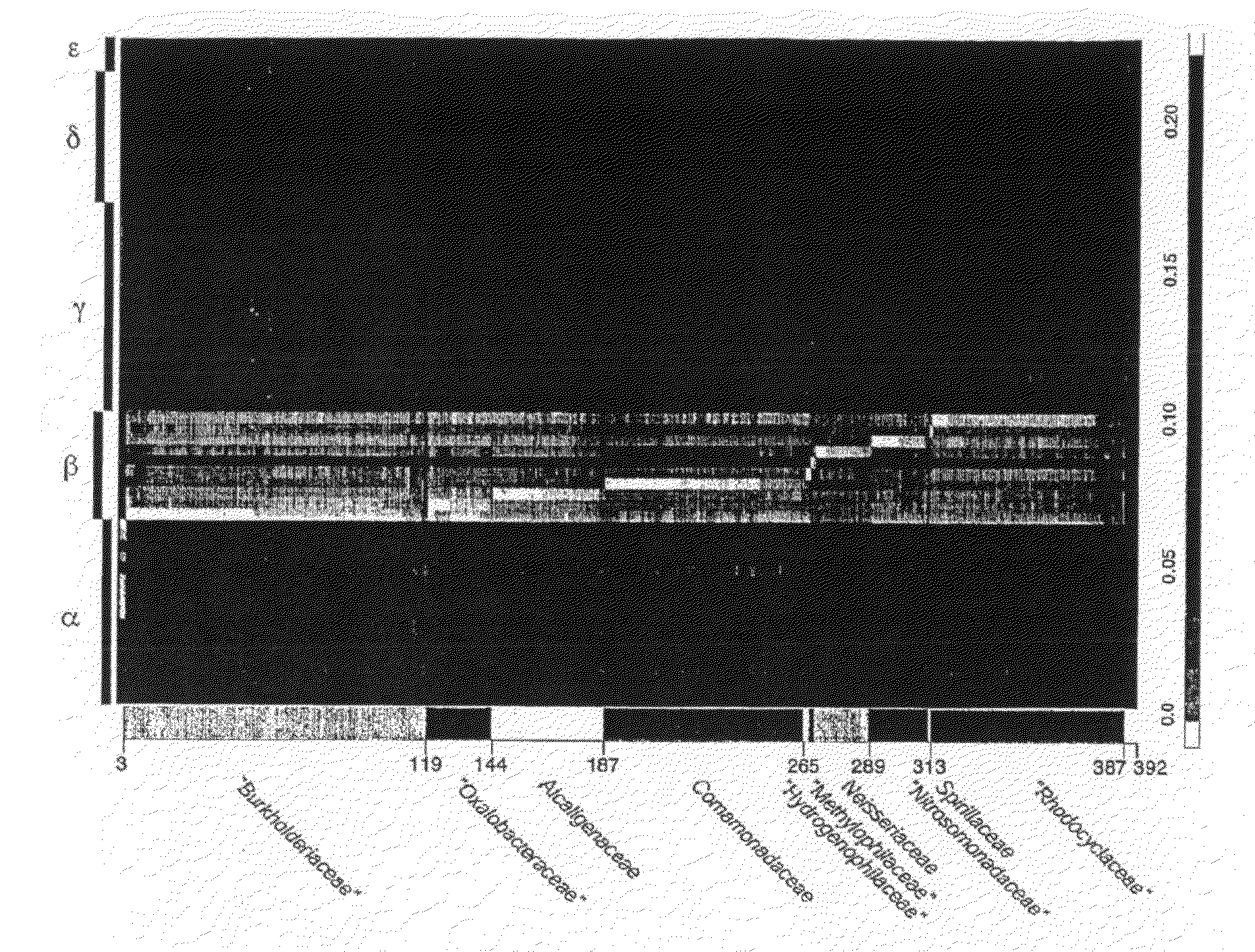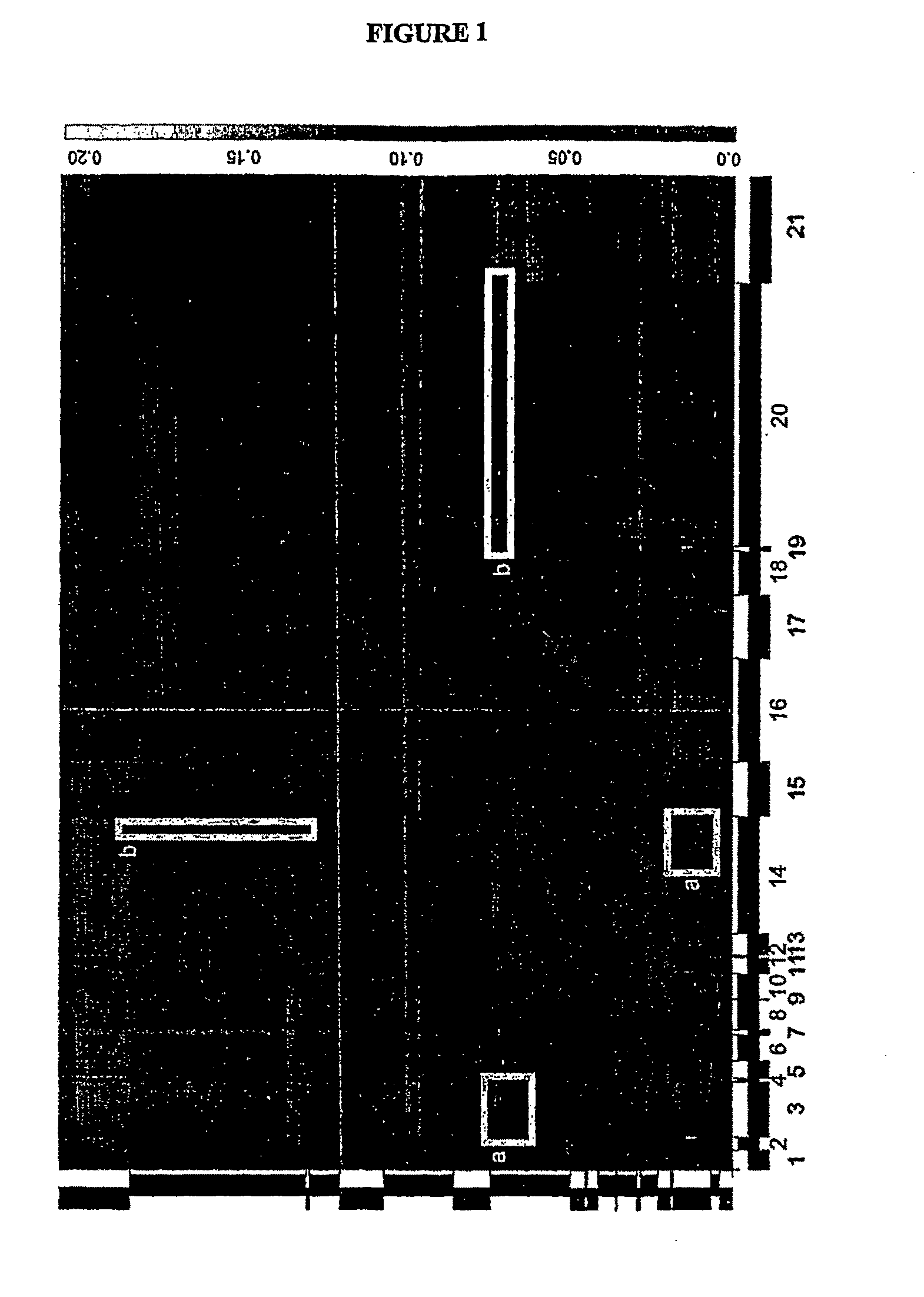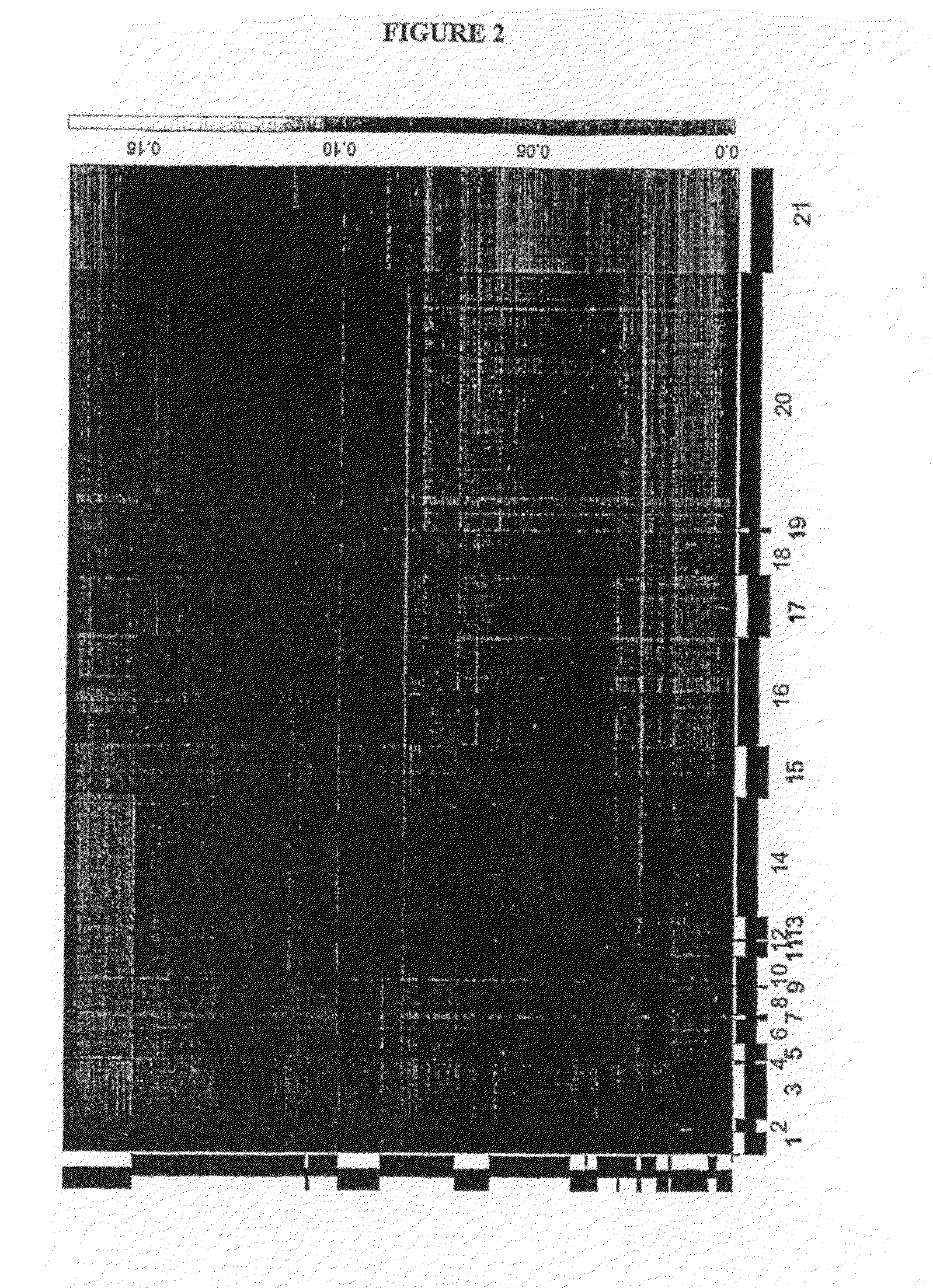Methods For Data Classification
- Summary
- Abstract
- Description
- Claims
- Application Information
AI Technical Summary
Benefits of technology
Problems solved by technology
Method used
Image
Examples
example 1
Self-Organizing, Self-Correcting Algorithm
[0037]Algorithm. The algorithm is implemented in the S programming language (See, e.g., Becker et al., The new S language: a programming environment for data analysis and graphics, Wadsworth & Brooks / Cole Advanced Books & Software, Pacific Grove, Calif., (1988)) and relies on functions that are part of the S-Plus environment (Version 6.1; Insightful, Seattle, Wash.). The code developed is available as an S-Plus script and can be implemented, with some modifications, in R (See, e.g., Venables and Smith, An Introduction to R, Network Theory Ltd., Bristol, UK (2002)).
[0038]Data. Data analyzed during development of the present invention consisted of 1433 sequences that were initially classified as belonging to the “Gammaproteobacteria”. The sequences were aligned and an evolutionary distance matrix was prepared as described in Garrity and Lilburn (See, e.g., Garrity and Lilbum, WFCC Newsletter, 35, 5-15 (2002)) except that a fully reflected dist...
example 2
Heatmap of the “Gammaproteobacteria” Based on an Evolutionary Distance Matrix with Unnamed and Uncorrected Sequences Removed
[0043]The distances are encoded as indicated on the scale (See FIG. 1). Ordering of the sequences within the heatmap is based on the sequence of taxa in Outline of Prokaryotic Taxa, Release 3.0. Solid bars along the axis indicated the range encompassed by individual families within the heatmap. Families are as follows: Ectothiorhodospiraceae, Xanthomonadaceae, Cardiobacteriaceae, Thiotrichaceae, Piscirickettsiaceae, Franciscellaceae, Legionellaceae, Coxiellaceae, Methylococcaceae, Oceanospirillaceae, Alcanovoraxaceae, Halomondaceae, Pseudomonadaceae, Moraxellaceae, Alteromonadaceae, Vibrionaceae, Aeromonadaceae, Succinovibrionaceae, Enterobacteriacceae, Pasteurellaceae. Highlighted areas (See FIGS. 1a and 1b) indicate misplaced taxa.
example 3
Heatmap of the “Gammaproteobacteria” with Unnamed and Uncorrected Sequences Added Back Following Supervised Clustering
[0044]The heat map is re-created after reorganization of the genera and re-insertion of unnamed and misidentified sequences (See FIG. 2). The ordering of the families is according to the Outline of Prokaryotic Species and are ordered as in FIG. 1. The exclusion of a small number of sequences derived from species not belonging to the “Gammaproteobacteria” results in a significant decrease in the overall range of evolutionary distances within the matrix. This is reflected in the improved contrast observed between closely related and distantly related species, accentuating further classification problems. Inspection of the heat map shows that while clear errors in sequence placement have been corrected, ordering of the genera within the higher taxa, those within the families and orders of the “Gammaproteobacteria,” remain suboptimal. Specifically, there exist three shar...
PUM
 Login to View More
Login to View More Abstract
Description
Claims
Application Information
 Login to View More
Login to View More - R&D
- Intellectual Property
- Life Sciences
- Materials
- Tech Scout
- Unparalleled Data Quality
- Higher Quality Content
- 60% Fewer Hallucinations
Browse by: Latest US Patents, China's latest patents, Technical Efficacy Thesaurus, Application Domain, Technology Topic, Popular Technical Reports.
© 2025 PatSnap. All rights reserved.Legal|Privacy policy|Modern Slavery Act Transparency Statement|Sitemap|About US| Contact US: help@patsnap.com



